In 1976, a few of France’s most eminent wine critics came together for a blind tasting of French and California wines. The Judgment of Paris, as it came to be known, would shock the world, as a chardonnay and a cabernet sauvignon from Napa Valley emerged victorious over the best of Burgundy and Bordeaux.
Visitors soon began to pour into the quiet farmland about an hour north of San Francisco, and they discovered that the landscape was as glorious as the vintages it produced. Four decades later, the valley draws nearly 4 million tourists a year, and its neighbor to the west, Sonoma County, has cultivated its own celebrated wine industry. Put the two together, and you get California Wine Country: roughly 2,500 square miles of golden hills, redwood forests, and rocky coastlines, all held together by an appreciation for life well-lived. We’ll tip our glasses to that.
Day 1
Oprah’s English muffins, Thomas Keller’s fried chicken, and Cakebread’s chardonnay in Napa Valley
St. Helena’s Main Street is still swaddled in shade, the sun working its way overhead, as I place my order for one of Northern California’s favorite breakfasts. The Model Bakery has been serving California Wine Country for decades, but Oprah Winfrey made it famous nationally in 2016, when she admitted that she has the bakery’s English muffins flown to her home. I take mine filled with scrambled eggs, Canadian bacon, and cheddar cheese, and thank Oprah for the recommendation.
Fueled up for the day, I hop in my car and cruise south, past some of the most famous wineries in the world. There’s Robert Mondavi; there’s Hall, with its unmistakable 35-foot tall stainless-steel bunny statue; and there’s Caymus Vineyards, which since 1972 has produced some of California’s best cabernet sauvignon, twice winning Wine Spectator’s wine of the year for its Special Selection bottling.
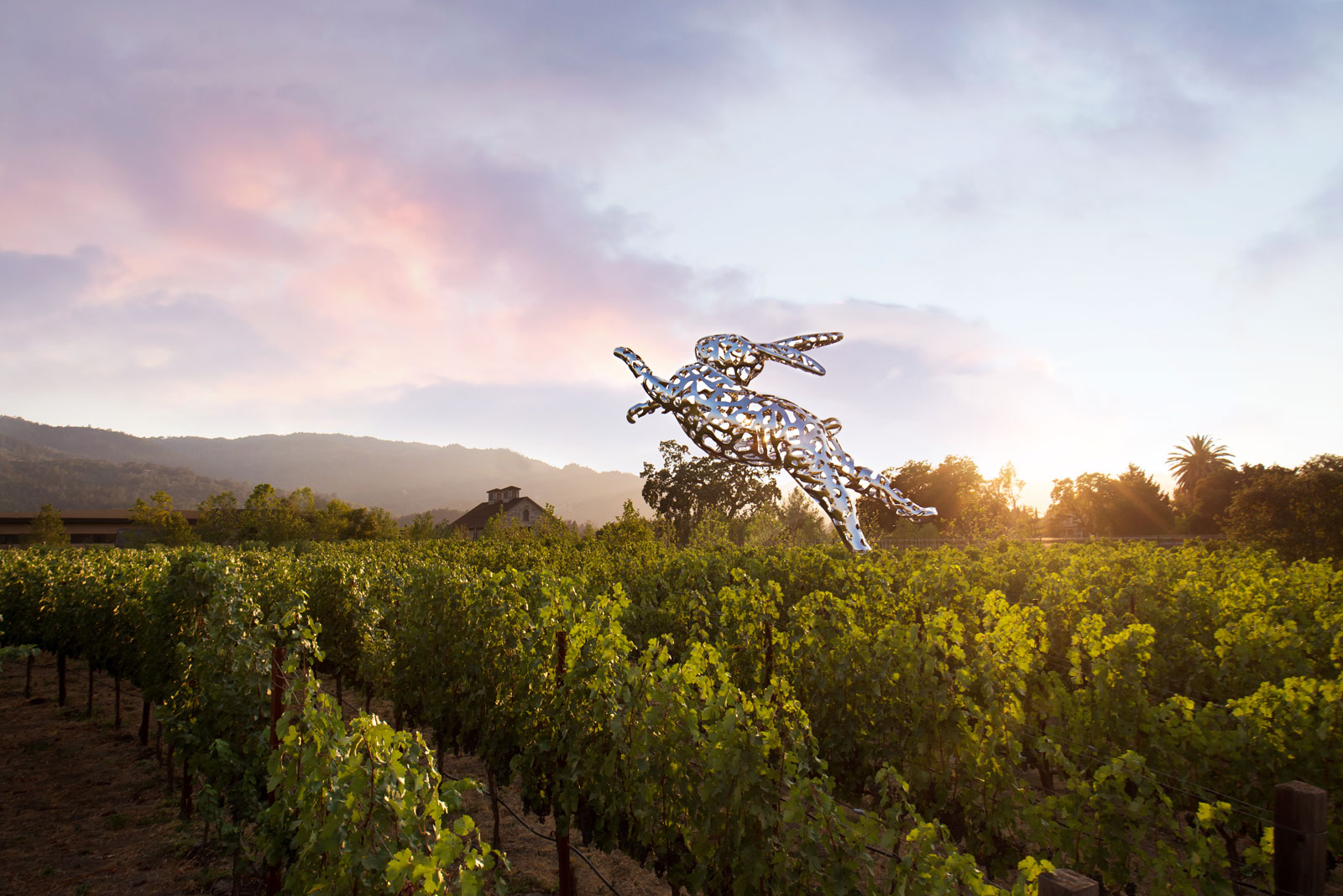
Half an hour later I find myself in decidedly less pastoral terrain. In an effort to beautify downtown Napa’s industrial backstreets, the Arts Council Napa Valley (with help from the Napa Valley Wine Train and Napa Valley Vine Trail) has commissioned a series of murals and christened the area the Rail Arts District. This is where I meet Kim McGinness, the owner of tour company Paper Napan Walkabouts.
“Art has always been a huge part of Napa,” she tells me. “It kind of pulsates through the city.” As we walk along the tracks, the occasional cyclist whizzing past us, McGinness gives me background on a few of the murals. First, there’s Rolling Portrait of a Firefighter, an animation reel–style row of images of the same fireman by Australian artist Fintan Magee.
“The building owners wanted to dedicate it to the actual firefighter who saved their home in the 2017 wildfires,” McGinness says. “His name’s Cody.” There’s also Knocking on Heaven’s Door, by Polish artists Natalia Rak and Bezt, which shows a butterfly taking off from a young woman’s hand. “The artists were staying at the River Terrace Inn, and that’s actually the check-in clerk at the hotel.” And then there’s the railcar emblazoned with two girls locking fingers together. “The artist, her street name is Elle, is actually a Napa native. She has them pinkie-swearing as a tie to her childhood.”
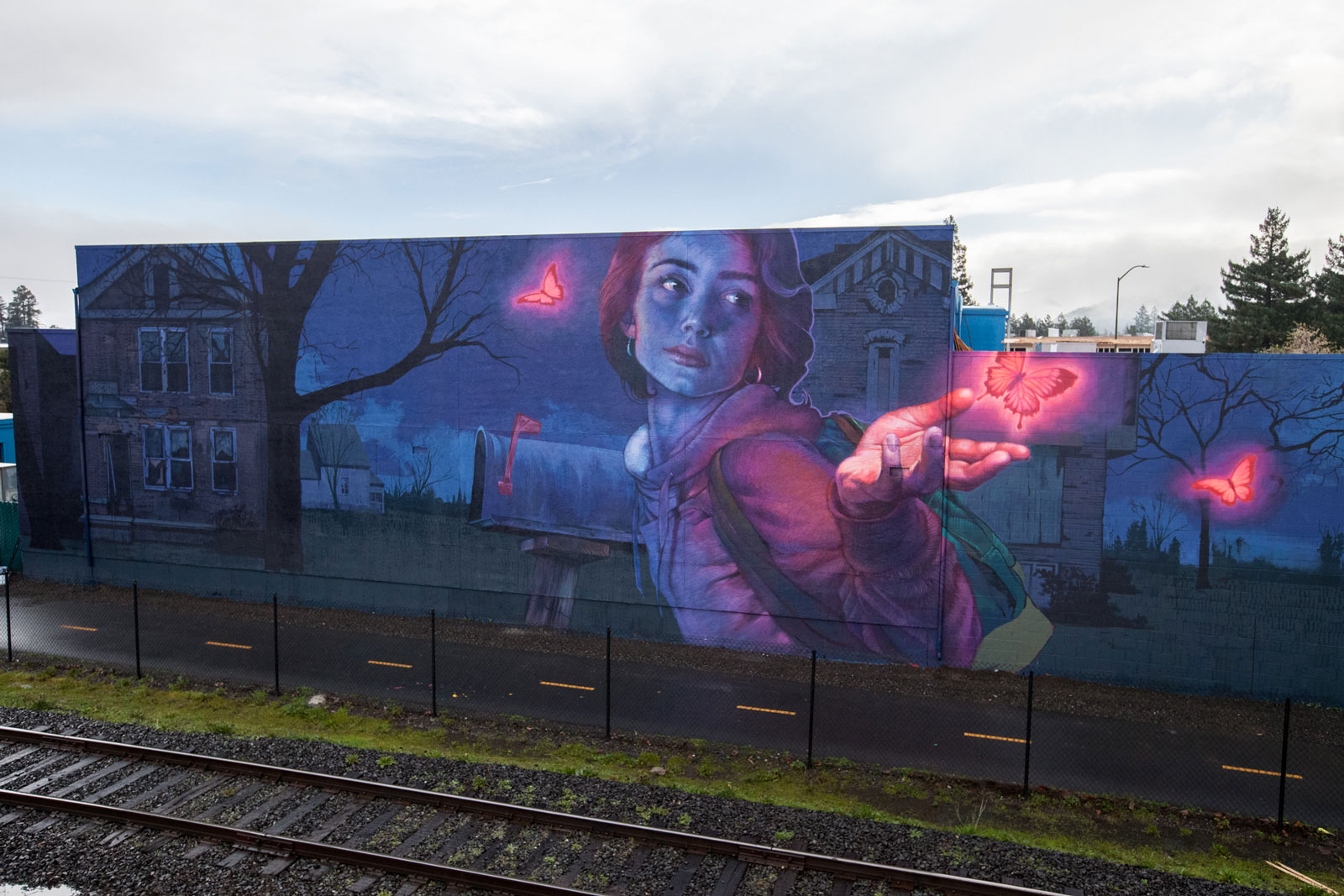
McGinness offers to introduce me to one of the many new tasting rooms downtown, but I have a prior appointment at, well, a tasting room. A few minutes later I pull up to Mi Sueño Winery, on the city’s south side. I’m greeted by Rolando Herrera, who offers me a glass of his El Llano red blend—named for his hometown in Michoacán, Mexico—and tells me his all-American story.
“My father brought us here for the first time in 1975,” he recalls. “I grew up here from about the age of 8 to 13, then went back to Mexico, but I missed Napa.” In 1982, at age 15, Herrera returned, living with his older brother, attending high school, and working as a dishwasher. One summer, while doing landscaping at Stag’s Leap Wine Cellars, he met renowned winemaker Warren Winiarski, who took a shine to Herrera and offered him a job in the cellar. “From the moment I first stepped in the wine cellar, I knew this is what I wanted to do,” Herrera recalls. In 1997, he and his wife, Lorena, began making their own wine, starting with a Los Carneros chardonnay. “I was going to sell it in the bulk market,” he says, “but people kept saying, ‘No, you’ve got to bottle this.’” Two decades later, he has his own label, tasting room, and 40 acres of vineyards in Napa and Sonoma, and his wine has been served at the White House. “Throughout this journey,” he says, “I’ve lived many, many of my dreams.”
I thank Herrera for sharing the fruits of his labor with me, and then I zip back up Highway 29 for lunch. Yountville is the cradle of chef Thomas Keller’s culinary empire and the location of five of his restaurants, including The French Laundry. I line up at one of Keller’s more casual places, Addendum, a stand in a garden behind Ad Hoc that serves fried chicken, ribs, and lobster rolls. I’ve scoured chicken shacks all over the South in search of the best bird, and the crispy, juicy, buttermilk-fried version served here can hang with just about any of them.
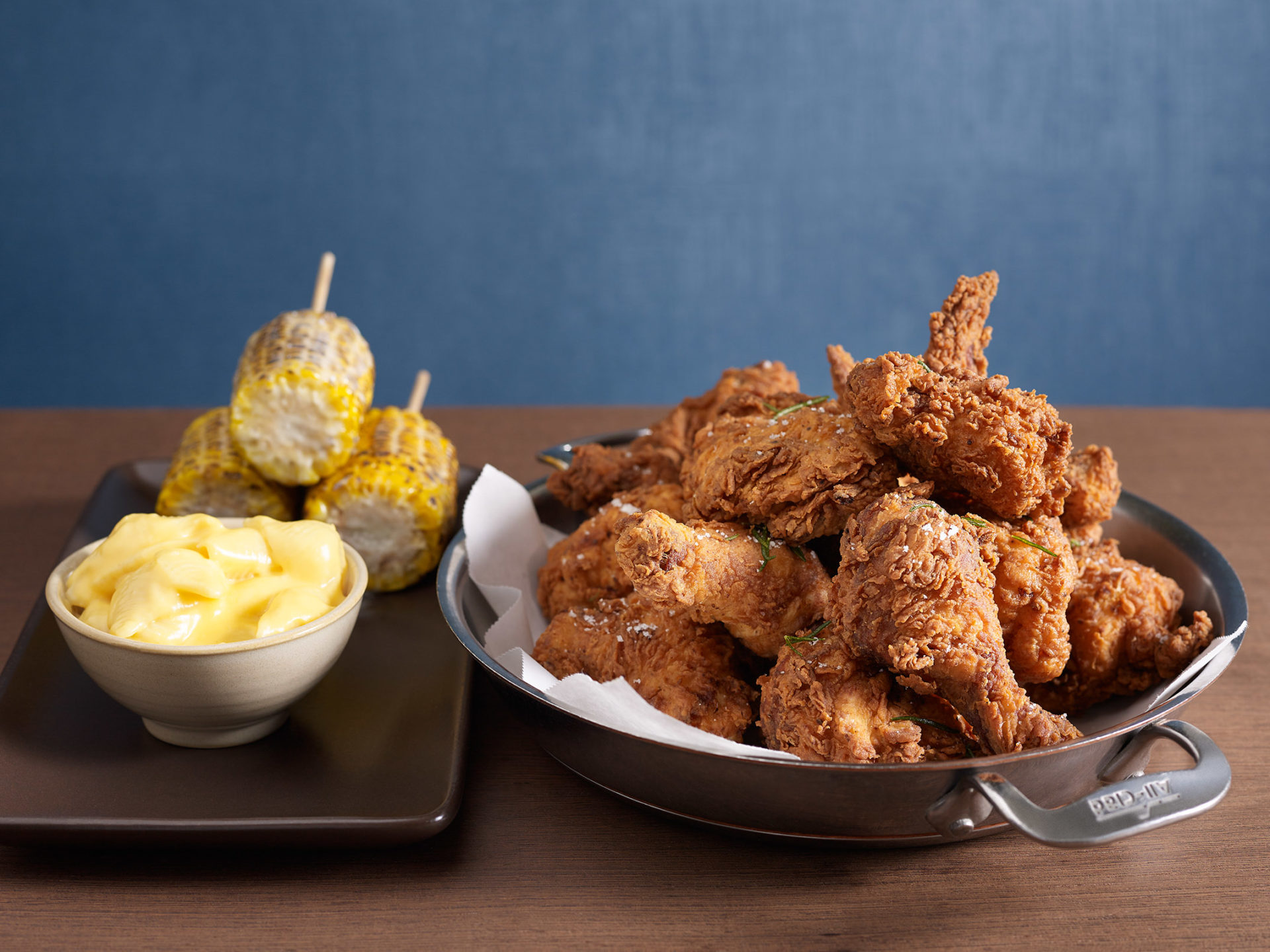
It’s hot out today, so I could use a nice chilled white wine. Cakebread Cellars, just up the road in Rutherford, has been making some of the best chardonnay in the valley since 1973, and I’ve been meaning to check out the new tasting room and visitor center, which opened last October. The space is a stunner, with reclaimed redwood wine tank staves on the walls and sunlight streaming in through a cupola overhead. The wine ain’t bad, either: I try both the classic chard and a sauvignon blanc that’s aged in French oak barrels, stainless steel tanks, and custom-made concrete eggs.
The sun has started to take a toll, so I’m off to the shadiest spot I can think of. Calistoga Ranch, from the über-posh Auberge Resorts Collection, is tucked in a canyon off the Silverado Trail. The accommodations here aren’t hotel rooms so much as individual private lodges, and after checking into mine, I flop down on a chair on the deck, beneath the branches of an oak tree that’s growing right up through the floorboards. I’m passed out in about two seconds.
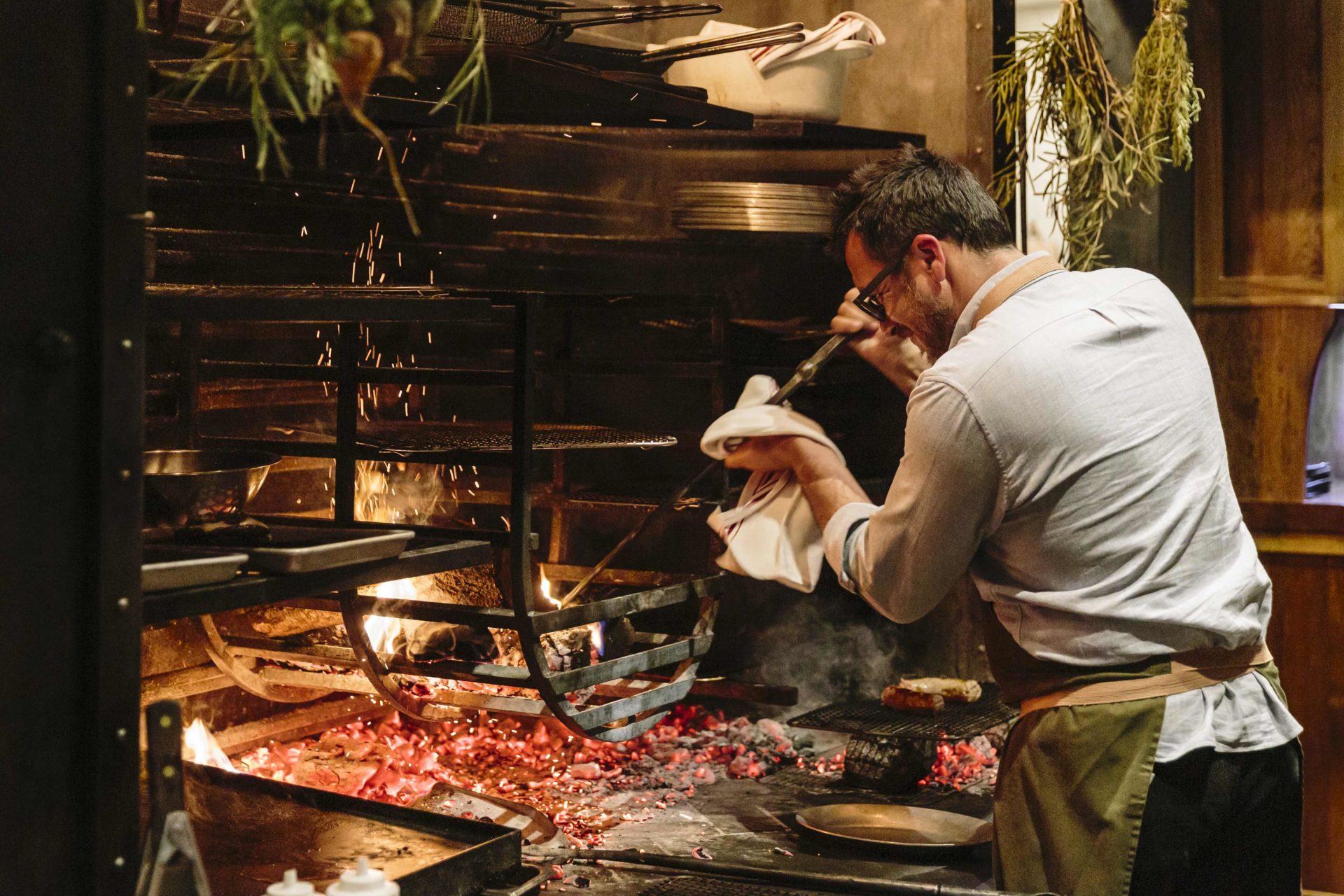
Upon waking, I shake off the cobwebs with a stroll on one of the Ranch’s cedar- and oak-lined private trails, followed by a quick rinse in my lodge’s outdoor shower. Feeling refreshed, and hungry, I have the concierge hail me a ride to The Charter Oak. Christopher Kostow, the executive chef of the three-Michelin-starred The Restaurant at Meadowood, opened this family-style St. Helena spot in 2017, winning instant acclaim.
The decor is all brick, from the patio to the walls around the property to the building itself, creating an old-school vibe that’s belied by the youthful diners sipping spritzes around the firepit. I dig into grilled Brokaw avocado, a salad of melon and cucumbers grown on the restaurant’s 3.5-acre farm, and a medium-rare hanger steak in a garlic lavender marinade. A glass of Newton Spring Mountain cabernet sauvignon washes that last bite down nicely.
At this point, I’m cooked considerably more well-done than that steak, so it’s back to Calistoga Ranch for the night. The quiet out here is a bit unnerving for this city boy, but it doesn’t take long for the wind in the oak leaves next to my window to lull me to sleep.
Day 2
A great writer’s grave, an Oscar winner’s retreat, and a star chef’s restaurant in Sonoma County
I’m up early this morning to beat the line at another hallowed Wine Country breakfast spot: Thomas Keller’s traditional French boulangerie, Bouchon Bakery, in Yountville. The smell of bread and the sight of the pastry display here are dizzying, but I keep it simple, picking up a chocolate croissant and a latte, plus a multicolored mix of macarons for the road.
I take the leisurely drive back down through the valley, then west through the rolling hills of the Carneros region toward Sonoma. I have a trio of personal pilgrimages to make today, and the first is in Glen Ellen, at Jack London State Historic Park. The author of The Call of the Wild and “To Build a Fire” is a literary hero of mine, and he lived on a Sonoma Valley ranch for the last few years of his life. That land is now preserved, and a short hike through the park brings me to the spot where London’s ashes were scattered following his 1916 death. Looking at the boulder that marks the grave site, I’m reminded of a few lines he wrote: “I would rather be a superb meteor, every atom of me in magnificent glow, than a sleepy and permanent planet.”
Seeking a magnificent glow of my own, I head back down the road to Scribe Winery. With its long, palm-lined drive and hacienda-style building, this reservations-only property just east of Sonoma Plaza is one of the most beautiful in Northern California. I stake out a spot on the patio, overlooking the vineyard, and sip an estate pinot noir and munch on Cowgirl Creamery cheese and fried Castelvetrano olives. I am indeed now feeling like a superb meteor.
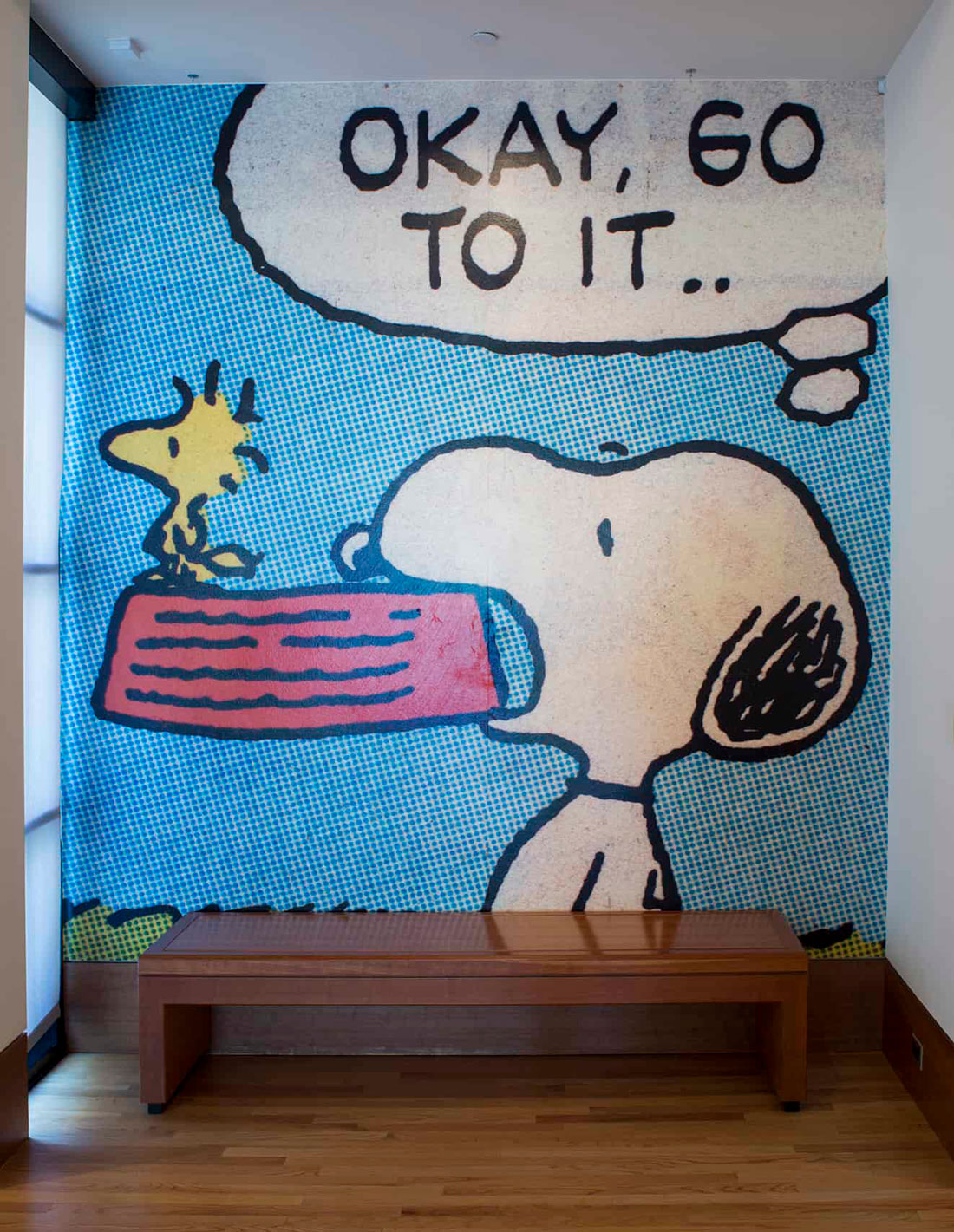
I double back north on Highway 12, meandering past endless grapevines for about 45 minutes, until I reach the residential outskirts of Santa Rosa, the North Bay’s largest city, where I’m paying homage to another artist. Like so many kids growing up in America, I felt a deep affinity for Charlie Brown, so I can’t pass up a visit to the Charles M. Schulz Museum and Research Center. The Peanuts creator lived in Sonoma County for more than 40 years, much of that time in Santa Rosa.Among the items on display at the museum are a dog house wrapped by the artist Christo, a 17-by-22-foot mural by artist Yoshiteru Otani of Lucy holding a football for Charlie Brown (he really believes he’s gonna kick it this time), old Peanuts strips and Hallmark cards, and a recreation of Schulz’s studio.
Humming the Peanuts theme as I drive, I merge onto U.S. Route 101 and continue another 15 miles north to the charming town of Healdsburg, where I’m having lunch at Barndiva. The local favorite is appropriately named, as the restaurant is in a gussied-up old barn encircled by spacious gardens. I sit outside, at a table flanked by sunflowers and dahlias, and have a meal of pan con tomaté and cacio e pepe with tongue-numbing Sichuan peppercorn. “This is perfect,” I hear a woman at a neighboring table tell her companions, and I have to agree.
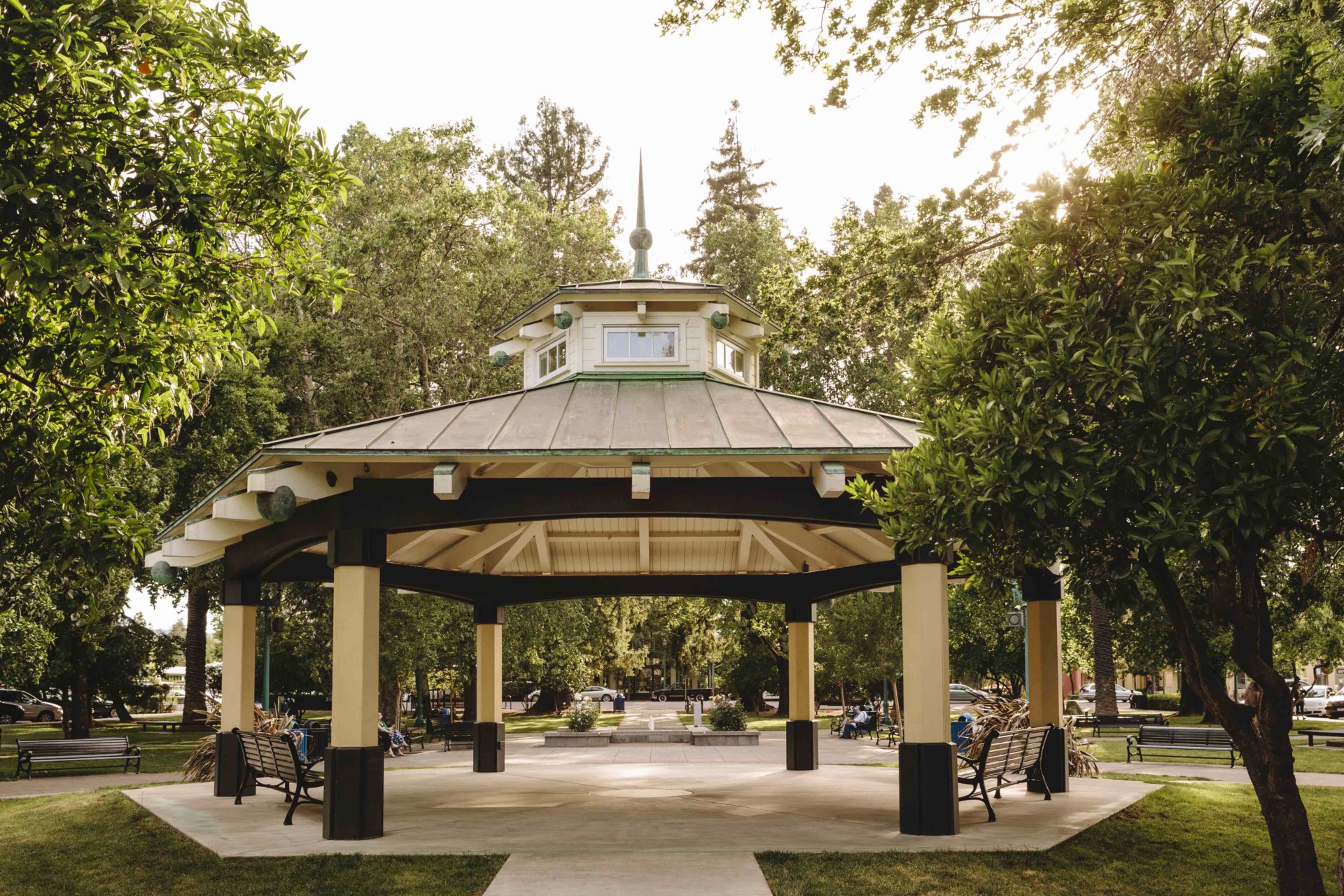
After lunch, I stroll around the block, passing the lovely Selby Winery and Roadhouse Winery tasting rooms on my way to Healdsburg Plaza, a 19th-century square surrounded by galleries and shops.I poke my head into Upstairs Art Gallery to look at some landscape paintings by local artists, then descend to the Levin & Company bookstore, where I pick up a copy of Emma Cline’s The Girls, set partly in nearby Petaluma. Crossing the street, I snag a bench in the plaza and spend a few minutes alternately reading and watching parents intercept their kids as they attempt to dive into a fountain.
The afternoon is getting on, and I have one more personal hero to pay a visit to. Just six miles farther up the road, in Geyserville, is the Francis Ford Coppola Winery. The legendary filmmaker has lived in Napa since the mid-’70s, when he bought the Niebaum Estate, and in 2010 he opened this Tivoli Gardens–inspired property as a family-friendly resort.
“I had this idea—why don’t we offer swimming pools and things that kids can do? ” Coppola tells me later, via phone. “That was a really far-out idea at the time, and the place became a new kind of winery where people didn’t just go and taste for a half hour but stayed for the whole day.” Read the extended Francis Ford Coppola interview here.
Being childless, I eschew the pool deck and the kiddos and head inside the chateau, which displays memorabilia including Coppola’s Oscars, the car from Tucker: The Man and His Dream, and Vito Corleone’s desk from The Godfather. I don’t detect the smell of napalm in the morning; I suppose that would ruin the bouquet of the reserve cabernet sauvignon I sip at the tasting counter.
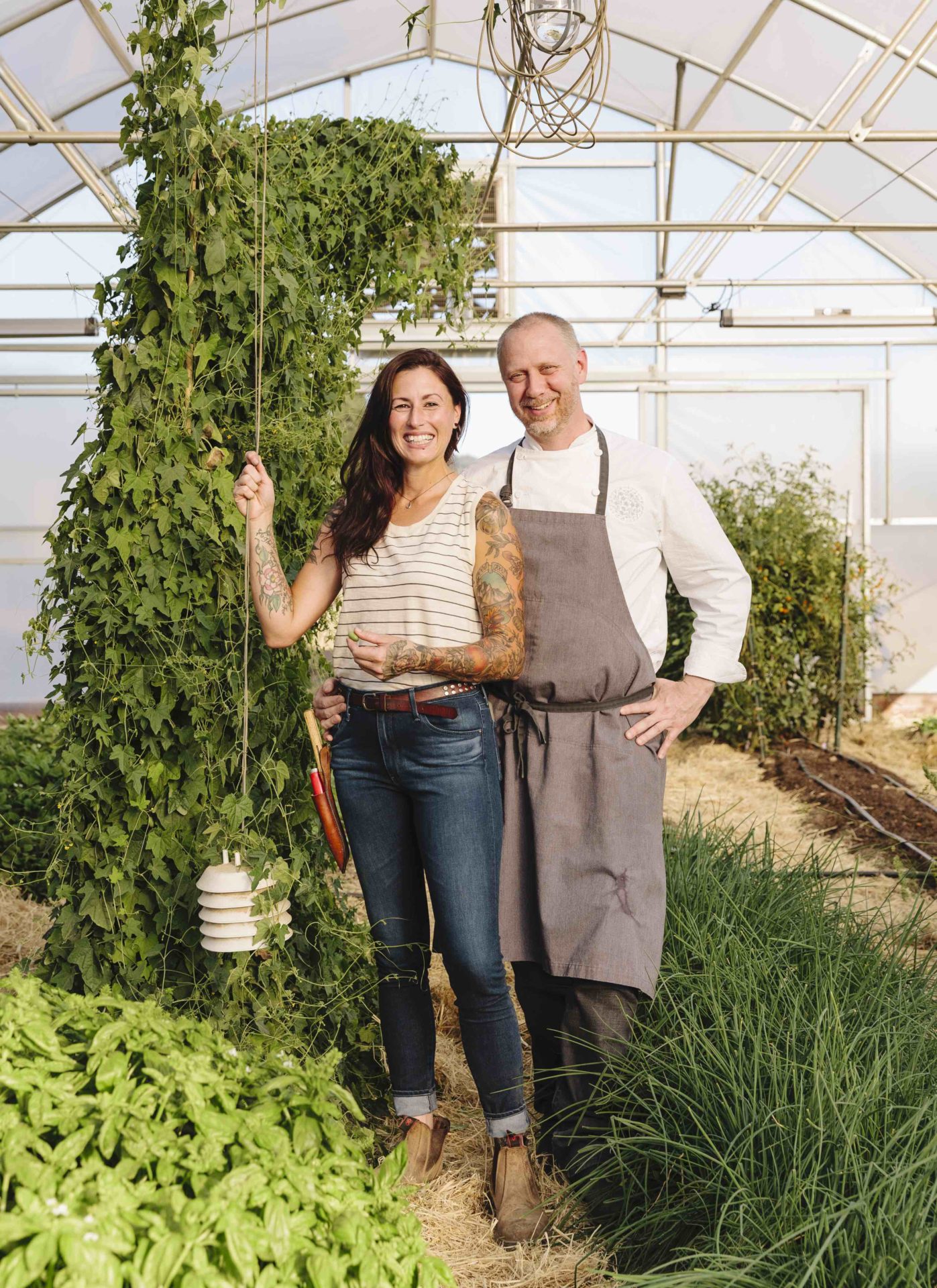
As the sun sinks behind the vineyard, I take my leave (and the cannolis) and make my way back to Healdsburg for dinner at SingleThread. The restaurant has been one of the toughest tables in Wine Country since it opened in 2016 (and subsequently earned three Michelin stars), but I’ve scored a reservation. Chef Kyle Connaughton offers a California take on Japanese kaiseki dining, using hyper-seasonal ingredients grown by his wife, Katina, on their nearby farm. The 11-course meal includes gorgeously presented plates such as wild-caught kanpachi with fresh tomatoes and cucumber; cured wild Sonoma salmon with trout roe and black sesame on Salanova lettuce; Duclair duck with plum, turnip, and the Japanese gourd kanpyo; and Wagyu short rib with pickled ramps and maitake mushrooms. Each dish is paired with a local wine or sake, and the overall effect is so elevating that I feel myself lifted up from my table, my feet not even touching the ground as I float to my bed in the property’s five-room inn. “Arigato gozaimasu,” I mumble as my head settles into the pillow.
Day 3
A redwood grove, a Japanese spa treatment, and a hideaway on the Sonoma Coast
Life is full of tough choices, and I’ve got a doozy right off the bat: Do I start my day with SingleThread’s American or Japanese-style breakfast? After much hemming and hawing, I stay domestic, and the table in my room soon bears zucchini bread, smoked bacon, housemade yogurt and granola, and an omelet with farm-fresh vegetables. I do opt for one Far East accent, though: an iced almond-milk matcha latte.
My last couple of meals have me feeling more in touch with nature than usual, and I decide to continue the theme by communing with some of Mother Earth’s most majestic residents. A 30-minute drive west along the Russian River brings me to Armstrong Redwoods State Natural Reserve, an 805-acre park featuring an old-growth grove of coast redwoods, including the Parson Jones Tree, which is more than 310 feet tall, and the Colonel Armstrong Tree, which is more than 1,400 years old. It’s cool and dark here, the damp ground between the colossal conifers blanketed with ferns, and I walk the trail slowly to soak in the aura of the forest. Did I just say “the aura of the forest”? California is really getting to me!
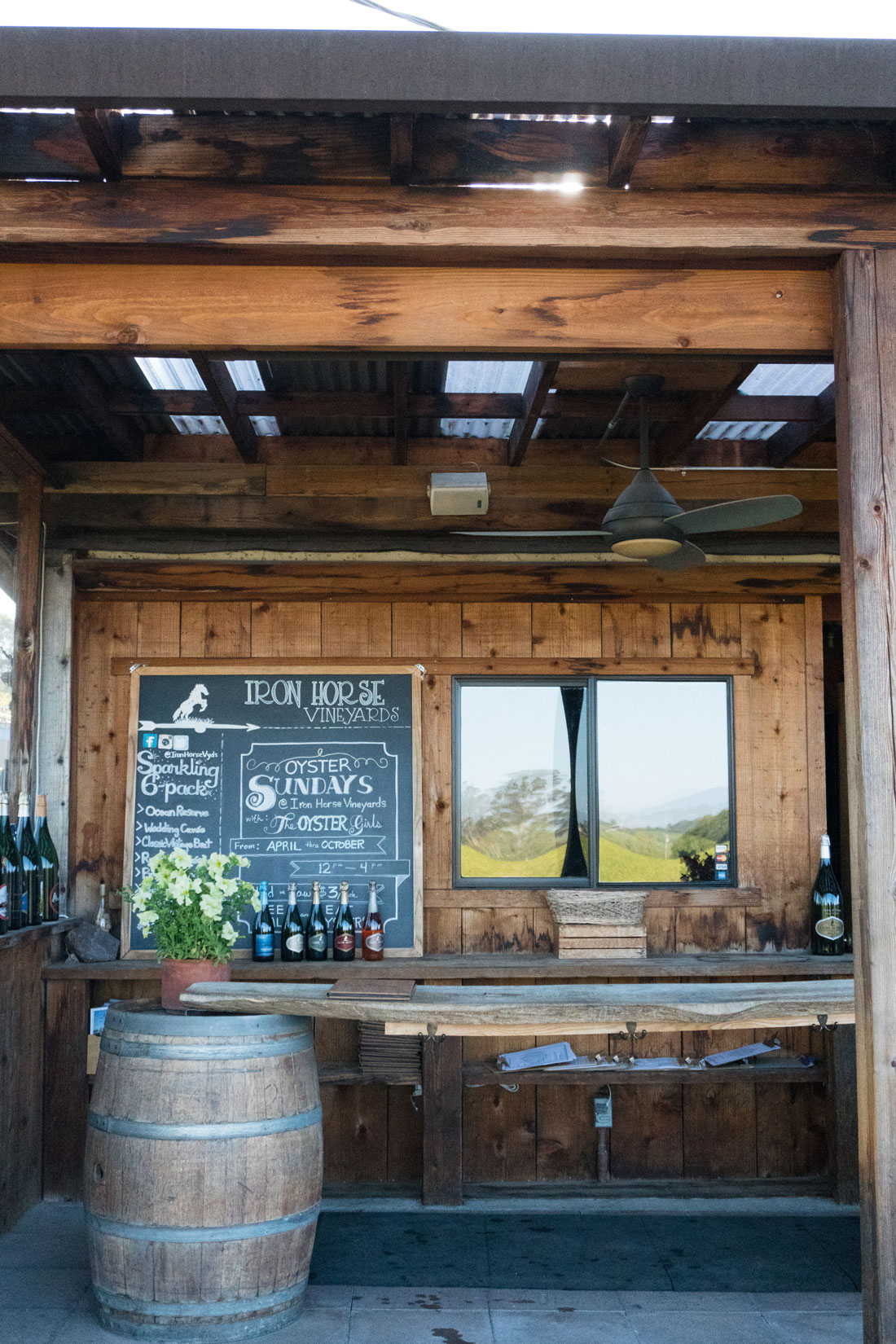
A few of the area’s most scenic wineries can also be found in the western hills of Sonoma County. I pass through the small resort town of Guerneville—a popular summertime getaway among the Bay Area’s LGBTQ community—on my way to Iron Horse Vineyards, which is known for its sparkling wines, rustic decor, and Green Valley views. The road degrades from smooth pavement to gravel as I approach the winery. The tasting bar is on a covered patio attached to the side of a barn, and swallows and dragonflies flit by as I sip a 2016 Summer’s Cuvée. “It tastes just like summer,” says the pourer, Diana, as she tops off my flute.
What better way to follow up some bubbly than with a spa visit? Just a few miles south of Iron Horse, in the tiny town of Freestone, is one of the Bay Area’s most unique retreats, Osmosis Day Spa Sanctuary. The storefront looks like it was taken from the set of Bonanza, but when I walk inside I feel as if I’ve crossed the Pacific. I change into a yukata robe and have a seat in a Japanese tea garden. (Owner Michael Stusser studied traditional gardening and Zen Buddhism in Japan.) After a few minutes of listening to the burbling of a small stream, I’m summoned for a Cedar Enzyme Bath. Osmosis is the only place in America you can get this treatment, which involves being buried up to the neck in a tub full of ground cedar and rice bran. It’s a bit claustrophobic at first, and as the enzymes begin to work on my body it becomes almost unbearably hot, but I focus on my breathing and soon feel the tension of all this strenuous Wine Country living lifted from my body.
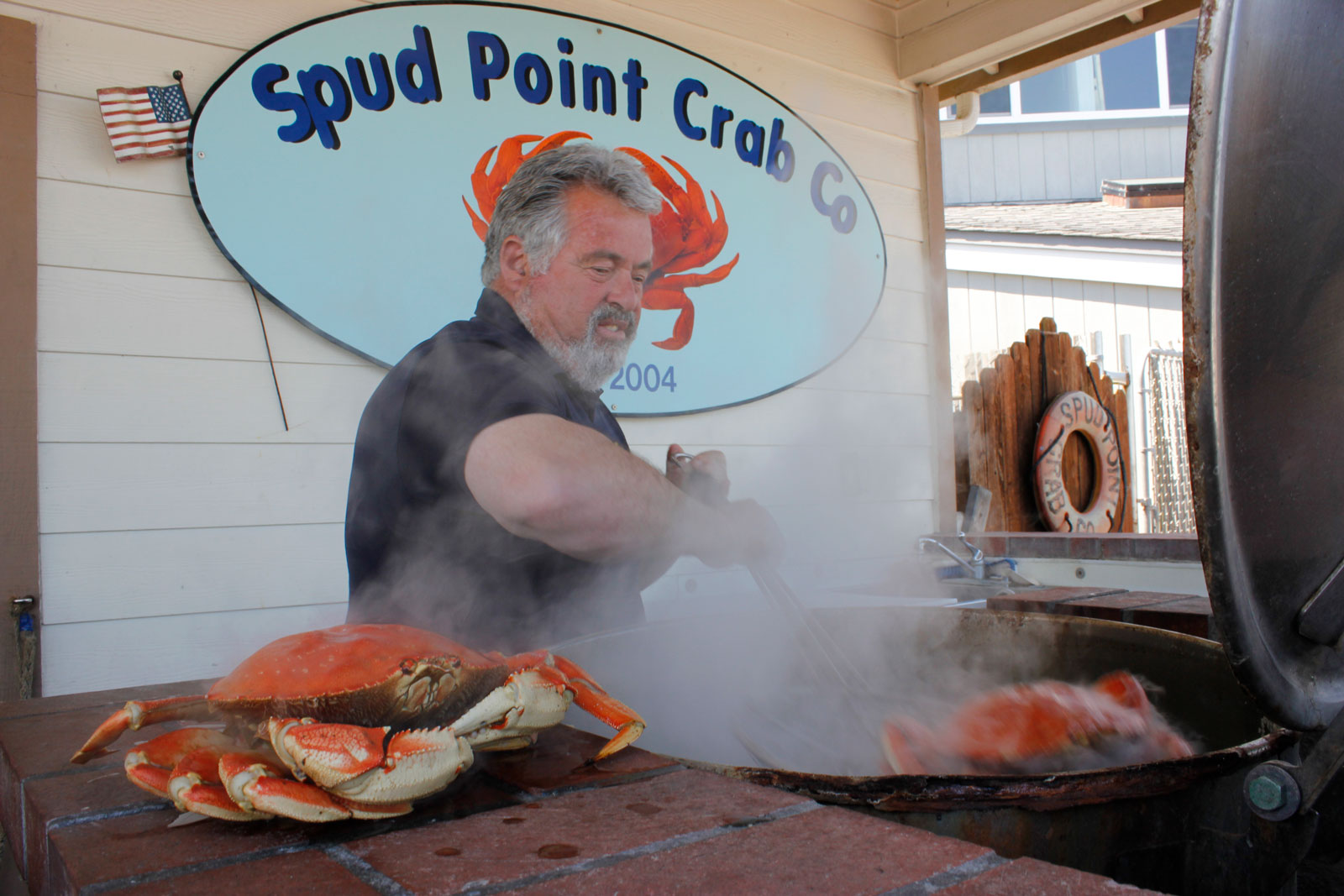
It’s time to cool off, so I keep on west, descending the hills to Highway 1 and the fogged-in shore of Bodega Bay. All the day’s pampering has me feeling a touch hoity-toity, so I decide to do a salt-of-the-earth (or, I should say, salt-of-thesea) lunch at Spud Point Crab Company.I park in front of the Spud Point Marina, pull on a hoodie, and cross the street to join the line of customers in front of the tiny seafood shack. The offerings here are simple—the crab sandwich is just crab meat and a smattering of sauce on a roll wrapped in white paper; the fresh-made clam chowder is served in a paper cup—but sensational. I devour both in record time at a picnic table out front.
Between the time I’ve spent in the car and the food I just put in my belly, I could stand to stretch the old legs. Fortunately, just north of here is Sonoma Coast State Park, a 17-mile stretch of headland with more than a dozen access points to sandy coves and beaches.I pull off at Goat Rock Beach, near the mouth of the Russian River, and kick off my shoes to walk in the sand. Turns out I’m not the only one getting comfy: A colony of harbor seals spends spring and summer here, birthing and raising their pups. The law states that people must stay 50 yards away from the seals, but even at that distance, watching the pups flop around on the sand and bark at each other is hilarious.
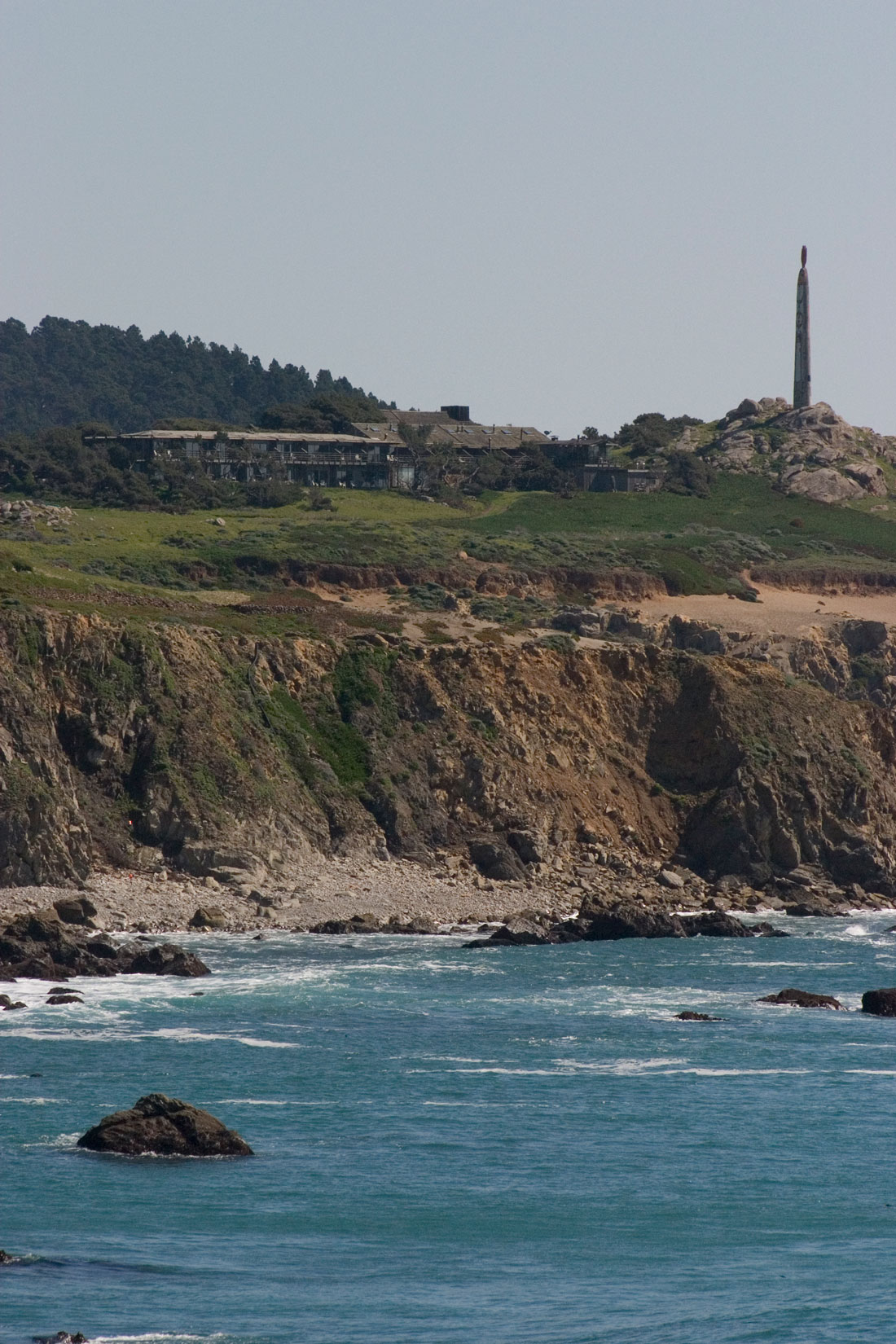
Chilly Pacific gusts are blowing in off the water and kicking sand up in my eyes, so after a few minutes of seal-watching I tromp back to the parking lot. I steer onto the highway, crossing over the river and through the town of Jenner. The views of the sea to my left are stunning, but I have to remind myself to keep my eyes on the winding road so I don’t end up cannonballing off the cliff. I know I’ve reached my final destination when I see a 93-foot-tall obelisk rise from the coastline. The artwork (created by Beniamino Bufano in the 1960s) is adjacent to Timber Cove Resort, a hotel with an A-frame redwood and stone lobby that makes it feel like a grand ski lodge repurposed for the coast.
My arrival coincides with dinnertime, so I snag a table at the resort’s Coast Kitchen restaurant. Soon I’m dining on Tomales Bay oysters on the half shell and the kitchen’s signature burger—made from Snake River Farm Wagyu beef and topped with smoked chipotle aioli and Applewood bacon—along with a pinot noir from nearby Fort Ross Vineyard.
After dinner, I retire to my room with the last of the wine. The suite is equipped with a record player and a few LPs, and I toss a Jackson Browne album on the turntable … but then I change my mind. Instead, I pour a glass of pinot, take a throw blanket outside, and drop down into the Adirondack-style chair on my deck. Covering up against the cold, I sip the wine and gaze out into the night, nodding to the truest of all California soundtracks: the crashing of waves against the cliffs below.
Additional reporting by Dana Rebmann
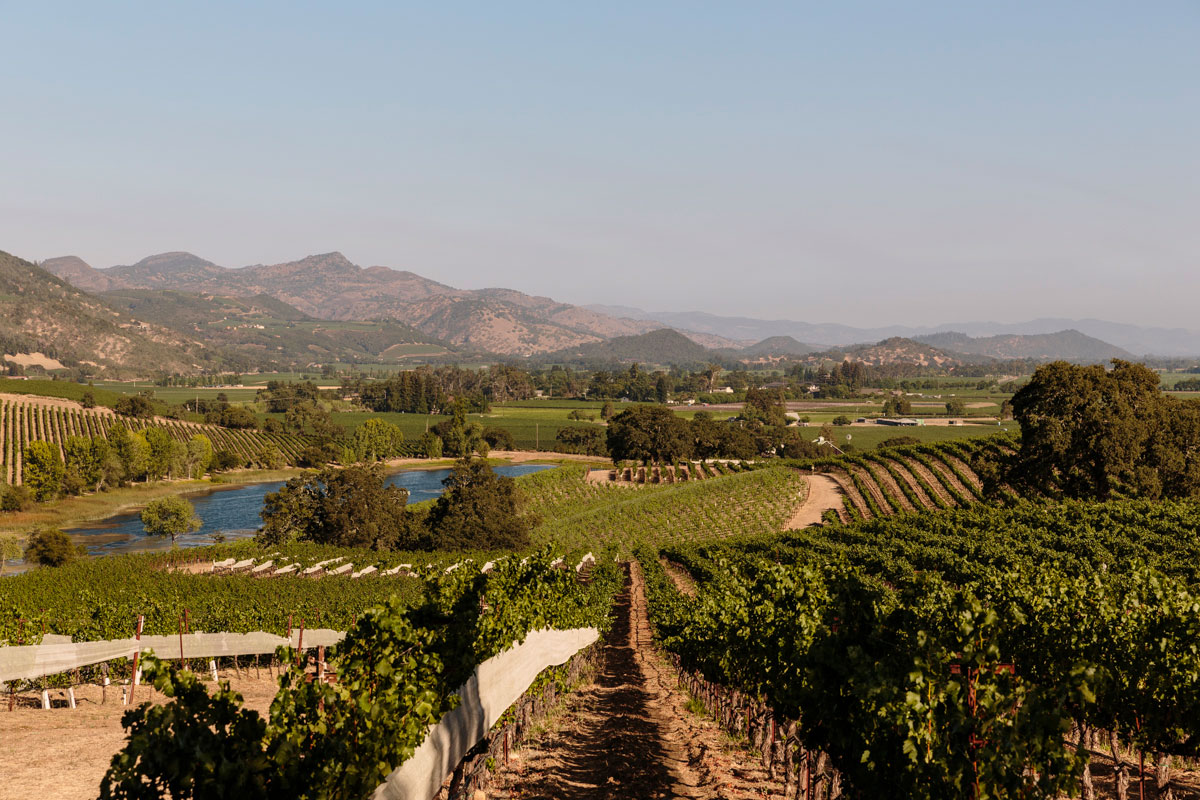
United has California Wine Country covered, with seasonal service to Sonoma County, as well as year-round flights to San Jose, Sacramento, and, of course, San Francisco. Download the United mobile app for details.
Next Up: Three Perfect Days: Montana
